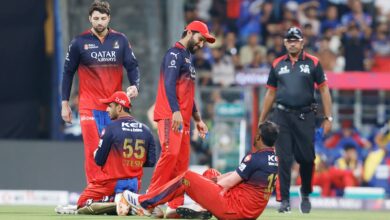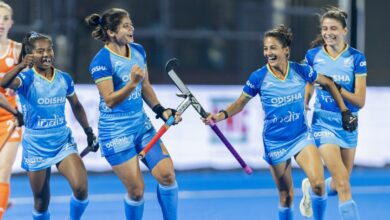Indian hockey’s new style: Half-court press to leverage counter attacks | Hockey News

From resembling the great Klopp-coached gegenpressing sides, India’s hockey team is fast transitioning into Mourinho-esque mid-block masters. And if the high press had its own magnetic allure, the half-court is no less captivating.The tactical tweak, the think-tank hopes, will give players a chance to exploit the full range of their counter-attacking prowess while also making the defence strong without necessarily being too defensive.“It’s more about setting yourself up for counterattacks, where you try to draw the opposition out a little bit,” India coach Craig Fulton said.
The Men in Blue march into the Semi Finals of the Hero Asian Champions Trophy Chennai 2023 undefeated.#HockeyIndia #IndiaKaGame #HACT2023 pic.twitter.com/30JNbIohdb
— Hockey India (@TheHockeyIndia) August 9, 2023
In doing so, the South African is tinkering with long-held ethos in Indian hockey, where teams across age groups played in a manner that involved a high, aggressive press to pressurise the opponents, block outlets, steal possession deep in their own half and mount an attack on their goal.
This style was in sync with the coaching system propagated Hockey India’s previous High-Performance Directors and even finds a mention in a dossier that outlines the national playing philosophy. In the document, ‘pressure press’ is one of the integral and high-priority components in the ‘without ball principles’.
The high press became synonymous with India as it rose from the pits of world hockey to the podium in Tokyo. Fulton believes that to climb further up the Olympic podium, altering the tactics could be essential.
“Sometimes, you high press the whole game, teams work it out so what do you do next?” he says. “You need another option behind your strongest presses so you have more than one way of going forward.”
Former coach Graham Reid, under whom India won the Tokyo bronze, employed a full-court press for the majority of his tenure before shifting to a two-third press as an alternative to give the forwards some space for build-ups.
Under Fulton, the team has retreated a little more and on defensive transitions, the players start at the half-line. The idea is to reduce space for the opposition, especially teams that are fast and aggressive, draw them forward and steal the ball so that a swift counterattack, India’s USP, can be launched.
“We have worked on this a lot at the camp and have had very good results,” captain Harmanpreet Singh said. “The team stays compact and plays within a structure and so, when we win the ball, it’s a question of making the correct decision.”
India used this tactic during the European leg of the Pro League, where they starved Belgium for space for most periods, before conceding a late goal. In the weeks that have passed since, the players have gotten more comfortable with the concept and have, to some extent, negated the counter-attacking threats posed their opponents during the ongoing Asian Champions Trophy.
It’s not like they’ve completely shunned the full press style. When the momentum is with India, when they do not have to be defensive or aren’t at a numerical disadvantage, they have pressed high and aggressively. But it hasn’t been frequent or a go-to style.
The hosts have used the half-court press especially when the team is a man-down during this tournament.
Former India striker and current assant coach Shivendra Singh said the tactic is also designed to play against higher-ranked teams who have often exploited the gaps left at the back while playing the full press.
“Teams like Australia and England play a lot on counterattacks,” Shivendra said. “When we played full press and they used to be a half-court, they used to exploit the tiniest makes we’d make; beat us in one-versus-one situations, exploit the consequent gaps and score a goal. With the new style, we can focus on counter-control because we have more numbers in defence.”
One of the best drag flickers in the world for a reason!@13harmanpreet#INDvPAKonFanCode #HACT2023 pic.twitter.com/voryv6qSF5
— FanCode (@FanCode) August 9, 2023
Shivendra added: “In full court, we had to be careful of not leaving big gaps or getting beaten in one-versus-one tackling since that can give opponents a man advantage. In half court, the aim is to block the centre and the straight line towards goal, push the opponents to wider areas because it’s easier then to defend the ball and tackle.”
Harmanpreet, who plays as a free man, is tasked with the responsibility to block the straight line between the attacker and the goal, which is called a ‘hotline’.
To bolster the defence even more, Fulton has turned to a double pivot in the midfield. He’s paired up two of Hardik Singh, Vivek Sagar Prasad and Manpreet Singh in the midfield, in front of the central defenders and behind the attacking midfielders.
It’s a tactic he’s employed frequently in the Asian Champions Trophy after drafting former captain Manpreet in the midfield, having played him as a defender in earlier tournaments. And it’s worked, with the pairings operating beautifully in tandem even in tight spaces.
With a little more than a month to go for the Asian Games, an Olympic qualifier, Fulton has illustrated how he wants his team to play. It might not be heavy metal hockey that India once played. But when it works, it’s equally enthralling.







